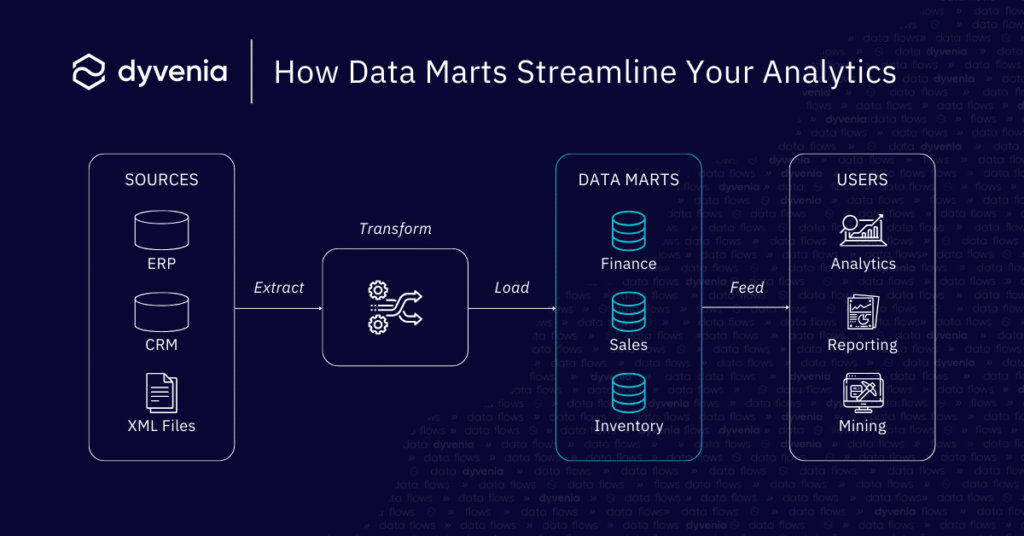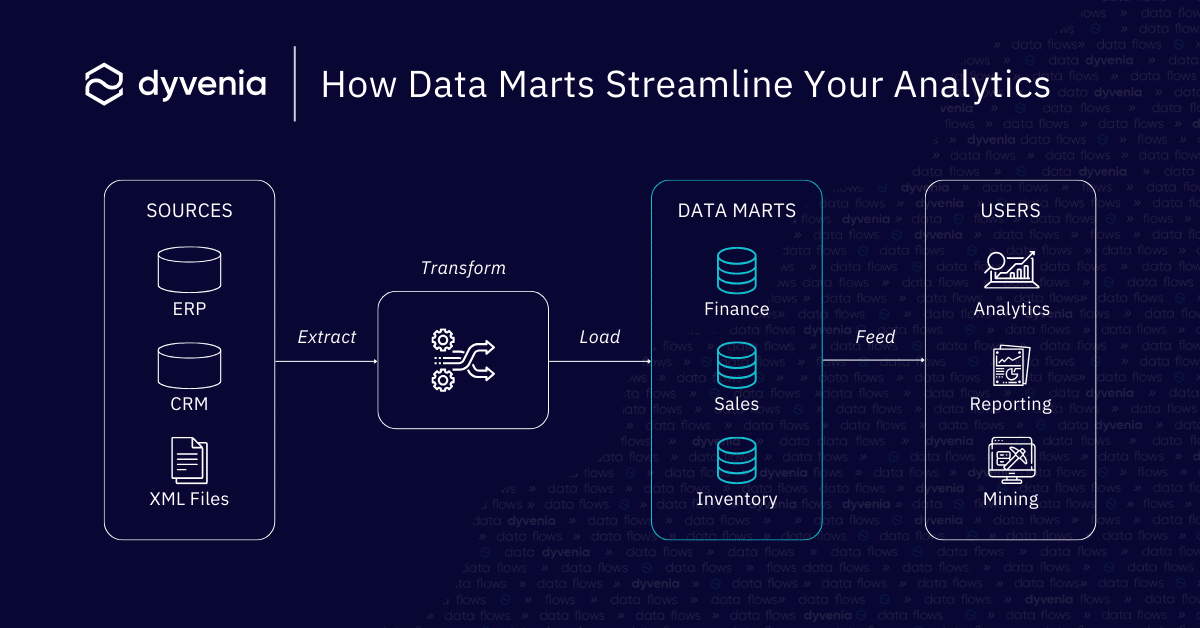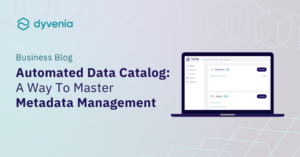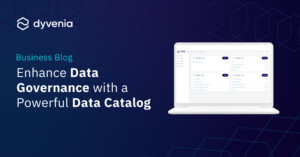The High Cost of Disparate Data Systems
In the fast-paced world of business, time is a resource that no one can afford to waste.
Imagine a manager, let’s call her Sarah, who spends countless hours each week manually compiling reports from a myriad of systems. Her frustration is palpable as she navigates through various tech solutions like ERPs, CRMs, CDPs, SaaS applications and independent spreadsheets, trying to align disparate data sets. Sarah has a double challenge: she is constantly looking to get reliable data as well as getting the right business context from the owner of that data. In turn, Sarah’s manager is also under pressure to deliver the dashboard results from Sarah’s report, and is becoming increasingly frustrated with the ongoing delays.
Such challenges are not unique; they are resonant with the hurdles that many organizations encounter on a daily basis, across all levels, in their quest for efficient data analysis and management. The International Data Corporation (IDC) recently confirmed that “80% of time is spent on data discovery, preparation, and protection, and only 20% of time is spent on actual analytics and getting to insight.”
The primary issue here is the scattered nature of critical data across multiple systems. While companies yearn for faster and better insights, they often find themselves bottlenecked by IT dependencies and a lack of cohesive data modeling knowledge. For instance, when different departments are using multiple applications, not to mention countless Excel spreadsheets, coordinating and aligning the data becomes a formidable task. The expertise required to model data from these varied sources is not universally available within teams, which creates not only a dependency on specific individuals familiar with these systems but also inconsistent data interpretation across different business departments.
Within an organization, this disjointed approach to data leads to a lack of coordination in definitions and business knowledge. KPIs and metrics can vary in interpretation across business departments, leading to inconsistent and sometimes conflicting analyses. Without a centralized approach such as a consolidated data mart, each department ends up creating its own version of reports.
The lack of a data mart also significantly impacts the speed of accessing data. The time it takes to gather the correct data without a centralized system can vary greatly and can have negative consequences. For example, a seemingly simple query like comparing last year’s sales to the current year-to-date figures could take hours or days to answer, resulting in lost time and frustration across all levels in the organization.
So What are Data Marts and How Do They Work?

Imagine being able to access all the data that you need in one place, in one table, and knowing that the table and data are valid, reliable, and completely trustworthy. In essence, you would have a pivot table with an unlimited number of columns, with all necessary and valid data available at your fingertips.
That is what a data mart can deliver for you. Data marts are highly efficient, effective data repositories with the aim of streamlining and enhancing the analytical and decision-making capabilities of an organization.
In turn, each business unit in the organization can have its own specific subset of data, allowing for more effective data handling and analysis. This foundational data approach empowers the entire organization to do their own modeling and data analysis, with the capacity to support multiple teams across the organization, with one data set that the entire organization can rely on.
A data mart has the ability to integrate and organize data from multiple sources, collating all relevant data and offering a singular, comprehensive view. The integration with tools like Power BI further extends their utility, providing a robust base for diverse analytical needs. The ETL (Extract, Transform, Load) process is integral to this, ensuring that data marts are continually updated with relevant, accurate information, making them dynamic and adaptable to evolving business requirements.
A streamlined approach to data analytics is critical, with data marts playing a pivotal role. Data marts offer a way to integrate and prepare data for self-service analytics, enabling standardized, efficient, and reliable data analysis across the organization. By adopting data marts, companies can ensure that everyone, from CEOs to data analysts, has timely access to the data they need, in a format they can trust and use effectively.
But what about data lakehouses? And how do they compare to a data mart? This question has never been as relevant as it is right now. Data lakehouses offer a cost-effective solution for handling terabytes of data, which is particularly advantageous for systems like SAP. They address the challenge of managing vast data volumes, shifting the focus towards governance, utilization, and adoption of this data. In contrast, data marts provide immense value by enabling more detailed analysis and efficient data monitoring across various teams within an organization. Efficiency is going to become a differentiator for large organizations as we move through 2024.
The Key Benefits of Data Marts
As discussed above, data marts play a pivotal role in enhancing business operations and decision-making processes. Having a unified view of business data through data marts allows executives, teams and individual business units to make key business decisions faster and on the basis of more reliable data.
This allows for:
- A unified view of business data for quicker insights, reducing the reliance on IT-generated reports which can take a prolonged amount of time.
- Access to trusted, consistent data from a single, centralized source, enhancing decision-making capabilities.
- Flexibility to incorporate new data sources seamlessly without disrupting ongoing operations.
- The reduction and eventual elimination of time-consuming, messy ad-hoc analytics; in time teams will be able to simply load data and analyze efficiently.
- The promotion of a culture of data-driven inquiry, reducing assumptions and fostering more informed decision-making across the organization.
Implementing a Data Mart for Optimal Results
So your organization has decided to implement a data mart. Where do you start?
Firstly, it is critical to select the right data sources and avoid ‘analysis paralysis.’
The starting point has to be identifying the key questions related to business performance and/or business results that need to be addressed.
This “right to left” approach involves starting with the end goals – the specific questions or problems – and working backward to determine the necessary data and its sources. Just like planning meals before grocery shopping ensures efficiency, this method avoids time and resource wastage. As part of this process, it is also important to think about the possible future business questions that you will need data to answer. By involving as many people who work with the data in this process now, you will put the organization in the best possible position to be a data-driven and centric organization in the future.
Secondly, from a data modeling and data quality perspective, it is imperative that you understand the key KPI’s, and then set data quality tests around those KPI’s. Different data types require different quality standards. For instance, finance data must be exact and precise, while operational data might focus more on consistency. Validating data accuracy both before and after implementation is critical to ensure reliability. At this implementation stage, it is essential that organizations establish clear definitions of what high-quality data means for each business unit, to ensure that the data mart meet these diverse and specific requirements effectively.
Moving from Chaos to Streamlined Business Analytics
When it comes to business analytics, time spent waiting for other departments to generate reports versus leveraging self-service analytics is a significant concern. Employees often find themselves mired in the process of defining and communicating data requirements to internal teams. This not only involves a lengthy request phase but also includes time spent assisting these teams in data retrieval and preparation. The paradox is that while self-service analytics is intended to streamline this process, it often becomes convoluted in enterprise environments with competing priorities.
This is where data marts emerge as a hugely valuable solution. Data marts are able to offer a centralized, standardized solution – thereby enabling a larger group of users to conduct self-service analytics effectively. This approach is particularly beneficial for operational reporting, where the agility of data marts can significantly reduce the time and resources spent on data preparation and retrieval. It also opens up the possibility of assigning dedicated IT personnel to business units, further bridging the gap between data management and business needs.
By implementing data marts, businesses can reclaim valuable time, allowing them to focus more on strategic decision-making and less on the mechanics of data extraction and interpretation.
Data Marts & Decision-Making Efficiency
At an enterprise level, the ability to make fast, informed, and reliable business decisions is imperative.
For a leader in an organization, the choice isn’t about having either self-service analytics or department-generated reports; it’s about optimizing both for efficiency and impact. With a data mart, specific business domains can conduct their own analysis, and when necessary, a centralized team can then provide support. This dual approach enhances trust, reliability and collaboration across teams, allowing for quicker solutions and more focus on solving actual business problems.
In today’s competitive environment, credibility and organizational trust have never been more important. For example, a CEO who, because of delayed reports, is unable to explain a drop in sales faces reduced confidence in their decision-making capabilities. At an operational level, consider a factory that is looking to expand rapidly. A significant investment is made in acquiring machinery with inadequate monitoring data. A consequent inability to swiftly access and interpret the right data can transform a minor issue into a major crisis. More worryingly, this issue can also take years to raise its head as a possible risk. What’s lacking in these situations is an agile, continually evolving data architecture.
This dynamic nature of data demands more than a static data warehouse. It requires a flexible, constantly growing data system, where the data architecture is not just an IT responsibility but a collaborative effort involving all data users. By involving all team members who use data in an organization, you are contributing to the future success of the enterprise. By creating an effective data organization, you are building a culture in which employees are encouraged to ask questions, question data, and raise their hands when something doesn’t resonate. This type of collaborative and cohesive working environment will result in a data-driven organization that is agile, dynamic, and responsive.
Conclusion
The core function of a data mart is to deliver instant data access – data at the push of a button. Data marts bring to an organization transformative potential with regard to analytics and reporting.
Data marts offer significant benefits:
- Unified, reliable data from one source
- Enables data-driven decision making across all organizational levels
- Fosters a culture of open communication and collaboration
- Creates an empowered and data-driven organization that generates rich and reliable insights
The prospect of having “data at the push of a button” is not just exciting but is transformative for organizations. It’s about turning data into a trusted asset that can lead to innovative models and deeper insights. It’s about having data that is not only informative but that also guides your next move – where every team member; all the way up to the executive level, is engaged in data-driven conversations.
If you are considering implementing data marts in your organization, carefully consider before you buy. There is no one-size-fits-all solution or approach. From a governance perspective, it is critical to first consider what domains your organization needs and decide on a methodology from the beginning, e.g. SQL. Once you have these basics in place, look at what you have, what you don’t have, and what you need to have in the future. Taking the time to understand and ensure that you have the right data architectural oversight in the early stages will help future-proof designs and allow you to make informed choices about your technology and talent needs.
To learn more about how our data mart solutions can revolutionize your organization’s data journey, we invite you to explore further. Embrace the future of insights with data marts and see the difference it makes in your analytics and reporting endeavors.
FAQ
What is a data mart?
A data mart is a specialized, centralized repository that consolidates data from various sources for a specific business unit or department, making it easier to access and analyze relevant information. It enhances decision-making by providing quick, reliable insights and reducing the time spent on data preparation.
How do data marts streamline business analytics?
Data marts provide a centralized, reliable data source, reducing time spent searching through disparate systems. By consolidating data into a single location, employees can easily perform self-service analytics, accelerating the decision-making process and reducing dependency on IT for report generation.
What are the key benefits of implementing data marts in an organization?
Some benefits of data marts include quicker access to consistent data, improved decision-making across departments, reduced reliance on IT teams for data analysis, and enhanced collaboration. They also foster a data-driven culture by empowering teams to run their own analysis using reliable, unified data.
How do data marts improve data accuracy and consistency?
By integrating data from multiple sources into a single, centralized platform, data marts ensure that all teams access the same set of accurate, validated data. This reduces the risk of conflicting analyses and fosters a common understanding of key performance indicators (KPIs) across the organization.
What is the difference between data marts and data lakehouses?
While both data marts and data lakehouses offer data storage and analysis solutions, data lakehouses are designed to handle vast amounts of unstructured data and focus on governance and management of large datasets. Data marts, on the other hand, are tailored for more detailed and specific business analyses, making them ideal for departmental or team-based reporting.
How can my organization ensure successful data mart implementation?
Successful implementation begins with identifying the key business questions and KPIs that the data mart needs to address. Involving all relevant stakeholders early on and ensuring that data quality standards are set and maintained is crucial. It’s also important to validate data accuracy during and after implementation to ensure long-term reliability.
How does a data mart help reduce dependency on IT for reporting?
A data mart centralizes and organizes data in a way that enables non-technical users to access and analyze it directly, using self-service analytics tools. This reduces the need for IT intervention in report generation, allowing business users to access and interpret data independently.
Author
-

The founder and CEO of dyvenia. Because of his background in financial analytics, he strives to deliver fast, efficient and impactful solutions. Due to his programming experience, he believes that robust software engineering practices need to be introduced to the world of data. And because he wants to see that gap between the people, technology and data bridged someday, he loves to bring complex technical concepts to people so that they understand the big picture behind becoming data-fueled.
View all posts





